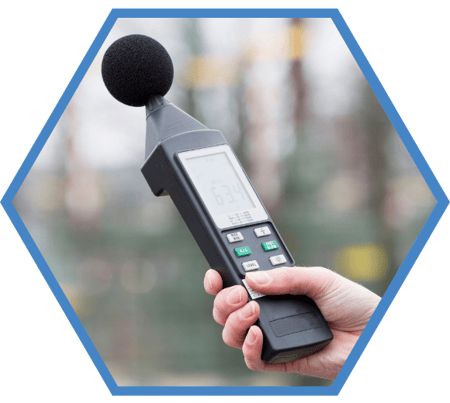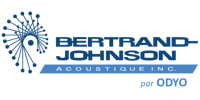NOISE MEASUREMENT
Noise mapping
To identify the noise risk in industries

By Tommy Keegan | Industrial Audiologist
Noise mapping is an analytical method for graphically representing noise levels in a given environment. This approach provides an overview of areas where noise is particularly intense, facilitating risk management and the protection of workers' health. In industrial environments, where exposure to noise is often high, noise mapping becomes an indispensable tool for identifying risk areas and implementing appropriate preventive measures.
The foundations of noise mapping
Noise mapping is based on the collection of precise data using sound level meters and other acoustic measuring instruments. These devices measure noise intensity in decibels (dB) at different locations on an industrial site. Once these data have been collected, they are integrated into acoustic modeling software.
These maps enable us to visualize noise sources (machines, production processes, material traffic) and identify risk areas where noise levels may exceed recommended limits. They are essential for assessing the impact of noise on workers' health, and for defining appropriate prevention strategies.
Benefits of noise mapping
Noise mapping provides several key pieces of information:
- Identification of noisy areas: Thanks to the graphic visualization of noise levels, it becomes easy to locate the areas most exposed to noise. This enables prevention efforts to be focused on these specific areas.
- Precise measurements: In contrast to spot measurements, mapping provides an overall view, enabling assessment of noise variations according to different times of day or processes underway.
- Optimization of interventions: By identifying noise sources and areas at risk, it is possible to define targeted solutions, such as the installation of acoustic protection, the reorganization of workspaces or the introduction of new production methods.
Key role in hearing risk prevention
Occupational deafness is a common ailment in industrial environments, where noise is omnipresent and often excessive. Noise mapping plays a fundamental role in hearing risk prevention, by providing an analysis of workers' exposure to noise.
It enables us to pinpoint areas where noise exceeds regulatory thresholds, in particular those set by ISO Standard 9612 or other local regulations such as those issued by INRS (Institut National de Recherche et de Sécurité). These thresholds are key indicators of a worker's maximum tolerated exposure to noise, beyond which hearing risks can arise, such as hearing loss or tinnitus.
By identifying at-risk areas, noise mapping makes it possible to:
- Reduce exposure;
- Implement planning solutions;
- Manage personal protective equipment (PPE);
- Improve the effectiveness of preventive measures.
An integrated approach to design and maintenance
Ideally, noise mapping should be carried out as early as the design phase of an industrial site and hearing conservation program. By assessing noise risks before machines or production processes are installed, it is possible to design a less noisy working environment. This can include:
- Choosing sound-absorbing materials for buildings and installations;
- Strategic orientation of machines to minimize noise propagation;
- Designing buffer zones where noise levels are lower and workers can retreat for breaks.
Noise mapping is not a static tool. It is essential to update it regularly as the working environment evolves. This includes:
- The introduction of new equipment;
- Wear and tear on machines;
- Changes to production processes.
Towards a safer working environment
Noise mapping is a tool for managing noise exposure in industrial environments and protecting workers' hearing health. By pinpointing areas at risk and proposing noise reduction measures, it plays a central role in a program to prevent occupational deafness. What's more, its use right from the design phase of a site and its regular monitoring help to maintain a working environment that complies with health and safety standards, while preserving the well-being of employees.
Noise mapping is a preventive, proactive and dynamic approach that guarantees an environment that complies with current standards. As part of a program to prevent occupational deafness, it not only meets legal obligations, but also ensures a healthy working environment for employees, while helping to reduce the costs associated with occupational hearing disorders.


Measure the risk with our noise measurement services
Identify noise risks early on in your hearing loss prevention program and develop an action plan to reduce the risks.

-1.png?width=144&height=72&name=BJA%20_%20Logo%20Color%20%20(1)-1.png)